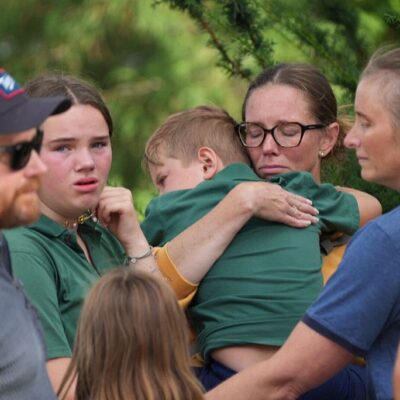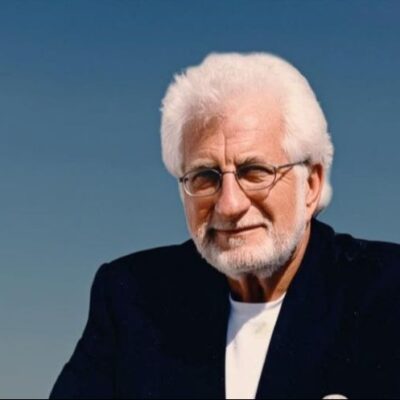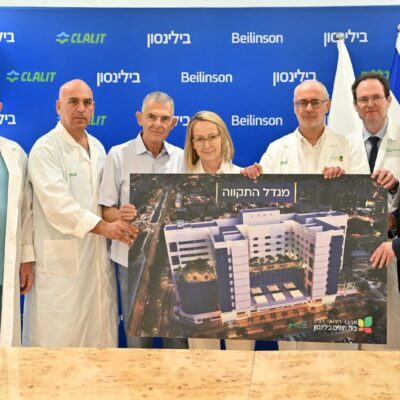How Do You Measure Development Success?
By Deborah Kaplan Polivy, Ph.D.
Common measures of achievement in the fundraising arena are total amounts raised in an annual and/or capital campaign. Even endowment success is often assessed by new money taken in yearly notwithstanding that the development officer at the time the gift is realized may have had nothing to do with securing it, e.g. the bequest. This article proposes a different measure of success or really a combination of them that when adopted will result in substantive development strategic planning. These metrics combine the donor lifecycle map and cultivation tools, which some refer to as “moves”[1] and the process moves management. The measures are twofold: 1) actions (moves) taken by the development officer and 2) progress of the donor along the lifecycle map. Gift size or results become a secondary measure.
The concept of the donor lifecycle map and the application of various cultivation tools along its sectors was developed in order to encourage strategic planning in the fundraising arena.[2] The donor lifecycle map is divided into sectors beginning with first gift and extending to “ultimate” or endowment, as shown below.
Illustration #1: The Donor Lifecycle Map

The purpose of this map is to suggest that philanthropy officers develop their strategic plans with the goal not only of retaining donors but also moving them to the next segment as opposed to thinking in terms of transactional fundraising related to annual and capital campaigns. The concept of applying cultivation tools is to specify which could be most effectively employed at each sector of the lifecycle map in order to move the donor along.
Thus, for example, asking a first gift donor to serve on a board, no matter how large that initial contribution, would be an inappropriate use of the cultivation tool – invitation to a board – in that the individual had demonstrated no ongoing commitment to the organization; that cultivation tool is better used for multi-year active donors who have contributed regularly and thereby expressed longer- term support for the organization. If the latter had the wherewithal to move to a stretch gift, based on ability to increase a contribution, or to become a major donor, however defined by the respective organization, all the better. In another example, in order to move a second year donor to second year active, the individual might be invited to participate in a telethon, chair or host an event or take part in an on-site visit. All of these tools would result in a supporter becoming increasingly knowledgeable about and therefore hopefully more committed financially to the organization.
Using this model an array of cultivation tools was identified, both personal and impersonal, that were then matched to the various stages of the donor lifecycle map with the goal of using them efficiently and effectively in order to move the donor forward. The primary tool for moving people along, no matter what the sector, was the one on one conversation – whether face to face or by telephone – in order to develop a personal connection to the individual.
Finally, the model was built to encourage the development officer and entire department to focus on all donors – not just those at the very top of what is called the donor pyramid – and to measure movement along the lifecycle as an indicator of success.
Examples of Personal Cultivation Tools
- Schedule face to face or personal meetings
- Thank the donor in a personal and timely fashion
- Use the telephone
- Involve on a committee, board or task force
- Conduct site visits
- Invite to a special function such as a sporting event or lecture
- Organize private events and special opportunities, e.g. parties, leadership or solicitation training, giving circles, etc.
- Include in a feasibility study
- Recognize major celebrations and events in the lives of individuals
- Ask for gifts in a strategic and timely fashion
Interestingly, Anne T. Melvin, Director of Training and Education at Harvard University, who introduced the concept of “Metrics That Motivate”,[3] claims that the best measures for determining success on the part of development officers are those actions that are implemented in relation to a donor. The metrics for success that she identifies are not financial results but rather steps undertaken that would likely lead to identifying a prospect and/or a next gift. Melvin’s actions that are the most highly valued are very similar to those that are identified as personal cultivation tools in the donor lifecycle map paradigm. Combining elements from both models – Melvin’s and the donor lifecycle map and corresponding cultivation tools – suggests new metrics for measuring development success.
Melvin’s concept is built on “aligning (development) officers’ metrics with the nonprofit’s goals,” “incentivizing moves in an officer’s control, rather than things an officer cannot control,” and “using carrots, not sticks.” The goal of the development office, Melvin claims, is to identify, cultivate and solicit prospects, find bequests, steward bequest donors and establish a bequest society – none of which is measurable in financial terms. The “METRIC”, claims Melvin, “is what the Officer does to accomplish the Office GOAL” – finding prospects, cultivating top prospects and establishing a bequest society. What the officer does to meet those goals is in 80% of visits – seeking prospects and making significant moves with top prospects; the number of moves is the metric. She differentiates between those measures which are in an officer’s control, for example, asking for bequests, securing bequests, reviewing prospect lists four times a year with a supervisor for bequest prospects,” and actually obtaining a contribution.
Melvin identifies what an officer does – actions which could also be referred to as using specific cultivation tools – and those that the officer cannot control, i.e. the decision making and gift size determined by the donor. In other words, if the officer visits the prospect, sends the latter information, encourages him or her to attend an event, visits a second time, obtains the donor’s agreement to host an event, join a committee, meet with a volunteer, and make a site visit while also soliciting the donor, sending him or her a proposal and getting a gift – these are all cultivation tools that will, if used well, result in some kind of contribution. All of these, Melvin claims, is part of the gift planning process and are considered “significant moves.” The latter, in my opinion, look very much like the donor lifecycle map with cultivation tools assigned to each sector in terms of what should occur to move the donor from the previous stage to the new one.
Illustration #2: Example of Cultivation Tools for Obtaining the Second Gift
While the model of using cultivation tools appears very similar to that of Melvin’s, the strategic planning component involves using impersonal cultivation tools, too, e.g. sending a newsletter or brochure, which Melvin refers to as “marketing touches.” No matter how they are described, these also are included in the strategic planning process needed to move a donor toward making a gift and remaining on the donor lifecycle map.
Both of these models – “Metrics that Motivate” and the donor lifecycle map along with the strategic use of cultivation tools – can be combined to create a powerful measure of success for development officers. The following is a model that I designed for one of my clients using a combination of the two concepts and applied to current donors – not prospects.
Model Metrics of Success
- Completion of a strategic plan for all assigned donors.
- Implementation of the plan giving the most weight to applying personal cultivation tools.
- Maintaining 75% of donors on the lifecycle map. (This takes into consideration that some people will drop out for sundry reasons but also that the people who do not continue along the map are contacted and a substantive effort is made to determine what the explanation for the lapse may be and to reconnect them to the organization.)
- Moving donors from one sector to the next:
- 65% of first year donors to second year as long as the first gift is an outright one – not in memory or in honor of someone.
- 25% of second year donors to second year active understanding that most people do not want to become more involved than just making a gift.
- 65% of second year to multi-year active and 100% of second year active to multi-year active.
- 50% of multi-year active to major/stretch/ultimate gift.
- Increasing the size of the gift – 10% at all levels.
- Meeting with the supervisor regularly – at least once a month to review plans and implementation.
This model focuses on maintaining donors and assumes that if the cultivation tools are applied well then the gift will also increase. Since this is the first year of using this schematic for measuring, we recognize that we shall have to tweak it as we become accustomed to it.
These measures are built on three important concepts. The first is maintaining the donor – an issue of concern for development offices.[4] The second is the creation of a cogent strategic plan and the third is that progress will most likely be made because the development officer will have to describe both the plan and its implementation at regular supervisory meetings. This latter piece is extraordinarily important for keeping staff on board as opposed to the constant movement in and out of organizations[5] sometimes due to the lack of internal support and managerial input. Without the supervisory piece, a development officer might spend a “year thinking that they’ve done a great job, but actually they haven’t.”[6]
[1] Anne T. Melvin, Harvard University, Director of Training and Education, State Street Global Advisors Annual Gift Planning Conference, April 29, 2014.
[2] Deborah Kaplan Polivy, Donor Cultivation and the Donor Lifecycle Map: A New Framework for Fundraising, Wiley, 2014.
[3] Anne T. Melvin, State Street Global Advisors Annual Gift Planning Conference, April 29, 2014.
[4] The Urban Institute, “2011 FEP (Fundraising Effectiveness Project) Donor Retention Supplement”, November 17, 2011.
[5] Jeanne Bell and Marla Cornelius, UnderDeveloped: A National Study of Challenges Facing Nonprofit Fundraising San Francisco, CA: CompassPoint Nonprofit Services and the Evenlyn and Walter Haas, Jr. Fund, 2013.
[6] Bryant, The New York Times, July 13, 2014, p.BU2.7/16/2014
Deborah Kaplan Polivy, Ph.D., is a fund development consultant and the author of “Donor Cultivation and the Donor Lifecycle Map: A New Framework for Fundraising,” (Wiley). Her website is www.deborahpolivy.com.















